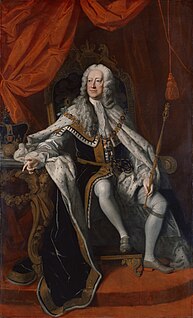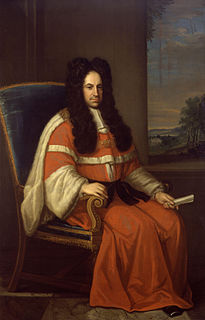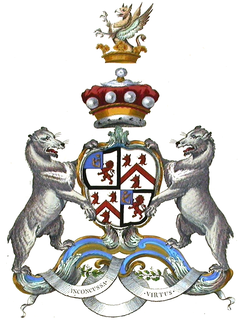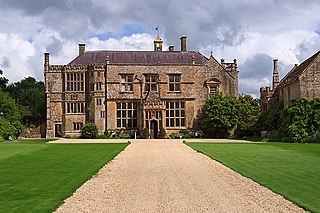John Clavering (19 July 1698 – 23 May 1762) of Chopwell Hall, Chopwell, formerly County Durham, now Tyne and Wear, was a member of a junior branch of the Clavering family.

Chopwell is a village in the Metropolitan Borough of Gateshead, Tyne and Wear, located approximately three miles west of Rowlands Gill and one mile north of Hamsterley. The Gateshead MBC ward had a population at the Census 2011 of 9,395.

County Durham is a county in North East England. The county town is Durham, a cathedral city. The largest settlement is Darlington, closely followed by Hartlepool and Stockton-on-Tees. It borders Tyne and Wear to the north east, Northumberland to the north, Cumbria to the west and North Yorkshire to the south. The county's historic boundaries stretch between the rivers Tyne and Tees, thus including places such as Gateshead, Jarrow, South Shields and Sunderland.

Tyne and Wear ( ) is a metropolitan county in the North East region of England around the mouths of the rivers Tyne and Wear. It came into existence in 1974 after the passage of the Local Government Act 1972. It consists of the five metropolitan boroughs of South Tyneside, North Tyneside, City of Newcastle upon Tyne, Gateshead and City of Sunderland. It is bounded on the east by the North Sea, and has borders with Northumberland to the north and County Durham to the south.
He was the son of John Clavering of Chopwell and was a Groom of the Bedchamber at the Court of George II from 1731 to 1761.

George II was King of Great Britain and Ireland, Duke of Brunswick-Lüneburg (Hanover) and a prince-elector of the Holy Roman Empire from 11 June 1727 (O.S.) until his death in 1760.
He was Member of Parliament for Great Marlow 1727–1731 and Penryn 1734–1741. [1]
Great Marlow, sometimes simply called Marlow, was a parliamentary borough in Buckinghamshire. It elected two Members of Parliament (MPs) to the House of Commons between 1301 and 1307, and again from 1624 until 1868, and then one member from 1868 until 1885, when the borough was abolished.
Penryn was a parliamentary borough in Cornwall, which elected two Members of Parliament (MPs) to the House of Commons of England from 1553 until 1707, to the House of Commons of Great Britain from 1707 to 1800, and finally to the House of Commons of the United Kingdom from 1801 to until 1832. Elections were held using the bloc vote system.
His London address was 8 Burlington Street, where the new house was built for him on a 62-year leasehold in 1734.
He inherited the Chopwell estate from his father and an estate at Potter Newton, near Leeds, from his mother. He died unmarried and bequeathed his property to his nephew, the 2nd Earl Cowper.

Earl Cowper was a title in the Peerage of Great Britain. It was created in 1718 by George I for William Cowper, 1st Baron Cowper, his first Lord Chancellor, with remainder in default of male issue of his own to his younger brother, Spencer Cowper. Cowper had already been created Baron Cowper of Wingham in the County of Kent, in the Peerage of England on 14 December 1706, with normal remainder to the heirs male of his body, and was made Viscount Fordwich, in the County of Kent, at the same time as he was given the earldom, also Peerage of Great Britain and with similar remainder. He was the great-grandson of William Cowper, who was created a Baronet, of Ratling Court in the County of Kent, in the Baronetage of England on 4 March 1642. The latter was succeeded by his grandson, the second Baronet. He represented Hertford in Parliament. He was succeeded by his eldest son, the aforementioned William Cowper, the third Baronet, who was elevated to the peerage as Baron Cowper in 1706 and made Earl Cowper in 1718. In 1706 Lord Cowper married as his second wife Mary Clavering, daughter of John Clavering, of Chopwell, County Durham.







